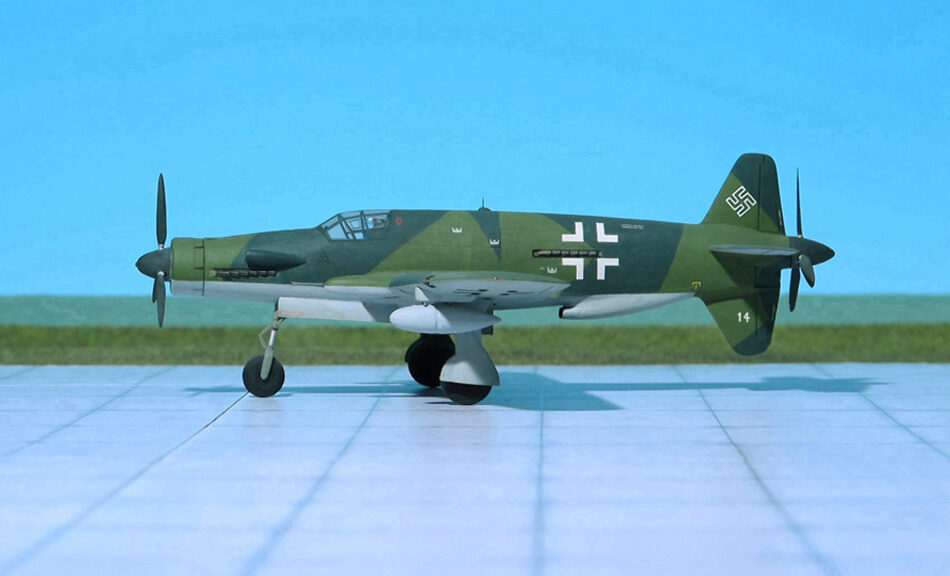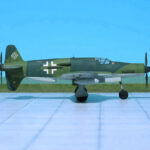TYPE: Destoyer, Fighter-bomber
ACCOMMODATION: Pilot only
POWER PLANT: Two Daimler-Benz DB 603E-1 liquid-cooled engines, rated at 1,900 hp at 5,905 ft each
PERFORMANCE: 474 mph at 22,000 ft
COMMENT: The Dornier Do 335 „Pfeil“ (Arrow) was a German World-War II heavy fighter built by the Dornier company. The Pfeil’s performance was much better than other twin-engine designs due to its unique push-pull configuration and the lower aerodynamic drag of the in-line alignment of the two engines. It was Germany’s fastest piston-engined aircraft of World War II. The Luftwaffe was desperate to get the design into operational use, but delays in engine deliveries meant that only a handful were delivered before the war ended.
The first 10 Do 335A-0s were delivered for testing in May 1944. By late this year, the Do 335A-1 was on the production line. It was similar to the A-0 but with the uprated DB 603E-1 engines of some 1,800 hp take-off power rating apiece and two underwing hardpoints for additional bombs, drop tanks or guns. It had a maximum speed of 474 mph at 21 300 ft with MW 50 boost, or 426 mph without boost, and climbed to 26, 250 ft in under 15 minutes. Even with one engine out, it reached about 350 mph.
With the worsening of war situation development emphasis in the „Pfeil“ programme switched from the A-series fighter-bomber to the more heavily armed B-series „Zerstörer“ (Destroyer), and during the winter 1944-45 the first Do 335B prototypes were completetd at Oberpfaffenhofen. The initial B-series „Zerstörer“ were essentially similar to the Do 335A-1 apart from armament and the deletion of internal weapon bay, its space being utilized by a supplement fuel tank. The Do 335 V13 had a 15-mm MG 151 cannon in the forward fuselage replaced by 20-mm MG 151s, and was intended to serve as a prototype fort he Do 335B-1, and the Do 335 V14 had this armament supplemented by two 30-mm MK 103 cannon mounted just inboard oft he main undercarriage attachment points, this being the prototype fort he Do 335B-2.
These were destined to be the only B-series prototypes actually completed and flown, although six additional aircraft were under construction at Oberpfaffenhofen when further development was terminated. These were the Do 335 V15 and V16, respectively the second prototype oft he B-1 and B-2 models, the Do 335 V17 which was intended as a prototype oft he B-6 two-seat night and bad weather fighter similar to the Do 335 A-6 but posessing the same armament as that oft he B-1; The Do 335 V18 which was to have been the second prototype fort he Do 335B-6, and the Do 335 V19 and V20 which would have been respectively prototypes for the Do 335B-3 and B-7 powered by DB 603LA engines with two stage superchargers, the former being a single-seater similar to the B-2 and the latter being a two-seater similar to the B-6 (Ref.: 7, 24).













